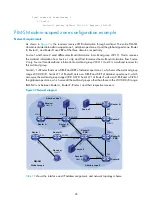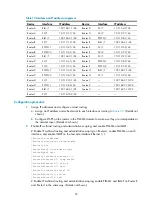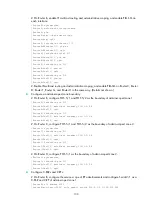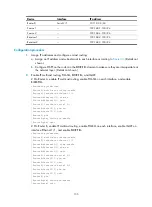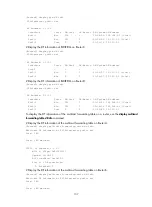
112
Analysis
•
When PIM-DM runs on the entire network, multicast data is flooded from the first hop router
connected with the multicast source to the last-hop router connected with the clients. When the
multicast data is flooded to a router, regardless of which router it is, the router creates (S, G) entries
only if it has a route to the multicast source. If the router does not have a route to the multicast source,
or if PIM-DM is not enabled on the router's RPF interface to the multicast source, the router cannot
create (S, G) entries.
•
When PIM-SM runs on the entire network and when a router joins the SPT, the router creates (S, G)
entries only if it has a route to the multicast source. If the router does not have a route to the multicast
source, or if PIM-DM is not enabled on the router's RPF interface to the multicast source, the router
cannot create (S, G) entries.
•
When a multicast router receives a multicast packet, it searches the existing unicast routing table for
the optimal route to the RPF check object. The outgoing interface of this route will act as the RPF
interface and the next hop will be taken as the RPF neighbor. The RPF interface completely relies on
the existing unicast route and is independent of PIM. The RPF interface must be PIM-enabled, and
the RPF neighbor must also be a PIM neighbor. If PIM is not enabled on the router where the RPF
interface or the RPF neighbor resides, the establishment of a multicast distribution tree will surely fail,
causing abnormal multicast forwarding.
•
Because a hello message does not carry the PIM mode information, a router that is running PIM
cannot identify what PIM mode its PIM neighbor is running. If different PIM modes are enabled on
the RPF interface and on the corresponding interface of the RPF neighbor router, the establishment
of a multicast distribution tree will fail, causing abnormal multicast forwarding.
•
The same PIM mode must run on the entire network. Otherwise, the establishment of a multicast
distribution tree will fail, causing abnormal multicast forwarding.
Solution
1.
Use the
display ip routing-table
command to verify that a unicast route from the receiver host to the
multicast source is available.
2.
Use the
display pim interface
command to verify PIM information on each interface, especially on
the RPF interface. If PIM is not enabled on the interface, use the
pim dm
or
pim sm
command to
enable PIM-DM or PIM-SM.
3.
Use the
display pim neighbor
command to verify that the RPF neighbor is a PIM neighbor.
4.
Check that PIM and IGMP are enabled on the interfaces directly connecting to the multicast source
and to the receivers.
5.
Use the
display pim interface verbose
command to verify that the same PIM mode is enabled on
the RPF interface and the corresponding interface of the RPF neighbor router.
6.
Verify that the same PIM mode is enabled on all the routers in the entire network. Make sure the
same PIM mode (PIM-SM or PIM-DM) is enabled on all routers. For PIM-SM, verify that the BSR and
RP configurations are correct.
Multicast data abnormally terminated on an intermediate
router
Symptom
An intermediate router can receive multicast data successfully, but the data cannot reach the last-hop
router. An interface on the intermediate router receives data but no corresponding (S, G) entry is created
in the PIM routing table.

